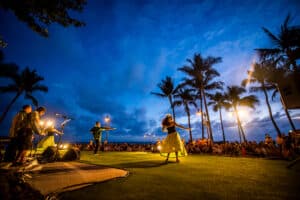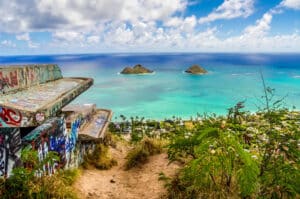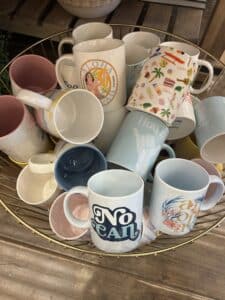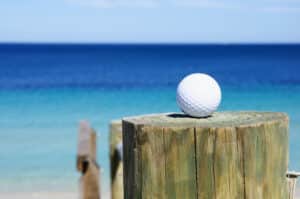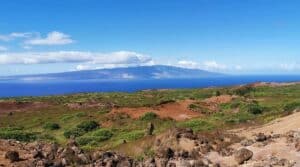When I first moved to Oʻahu, the Honolulu Museum of Art became a favorite weekend escape. It’s the kind of place you return to again and again — each visit revealing something new. It’s a great place to go with friends, meet new people and enjoy art. Years later, I brought my children to one of the museum’s Sunday events. There were kid-friendly activities and live music and performances.
That’s the beauty of an outing there. Whether you’re looking for a quiet date, a cultural adventure, or a family activity, there’s something for everyone to enjoy.
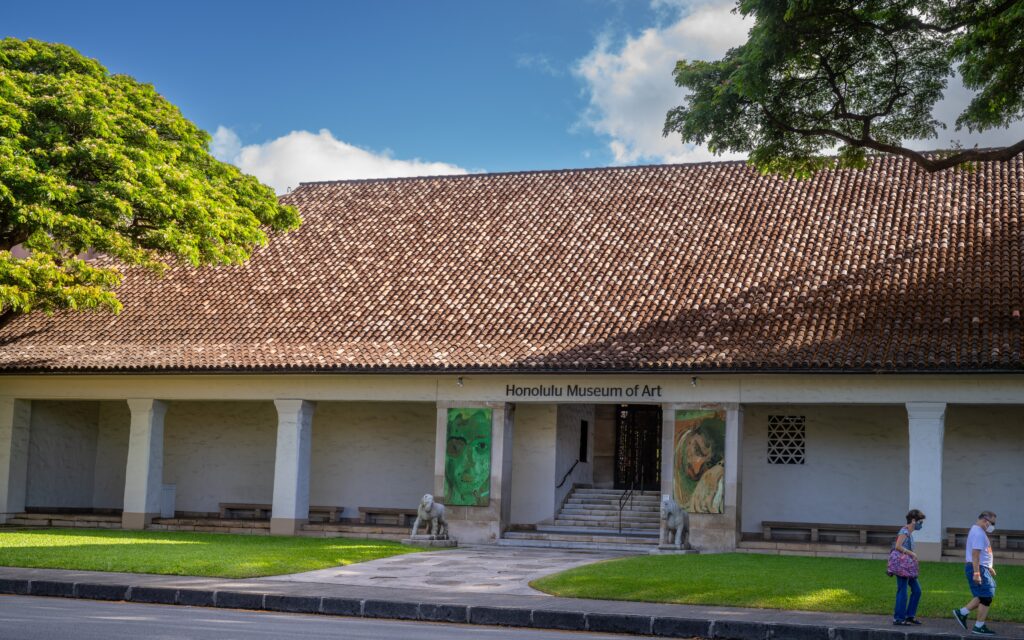
Honolulu Art Museum on Beretania Street (Shutterstock)
A Museum with Island Roots
Founded in 1927, the Honolulu Museum of Art (HoMA) stands out among art museums. The dream of Anna Rice Cooke, a local collector, wanted to share her love of art with the people of Hawaiʻi. Located in downtown Honolulu, the museum is easily accessible and adds to the vibrant cultural landscape of the area.
She transformed her home into a museum that combined global collections with island sensibilities. Today, it houses over 50,000 works spanning Asian, Pacific, European, American, and African art. The original Spanish-style architecture has been preserved, and its open-air courtyards let the light and breeze in — blending art and nature in true Hawaiian fashion.
HoMA’s mission is about making connections — between people, cultures, and ideas. You can feel that in every corner, from the Buddhist temple statues to the contemporary Hawaiian prints.
Explore the Collections
You could easily spend hours exploring the exhibits. Don’t miss the Art Spalding House, a significant part of the museum that offers notable art collections and a beautiful setting. Highlights include:
- Asian Art: One of the strongest areas of the museum, featuring Japanese woodblock prints, Chinese ceramics, and Buddhist sculptures.
- Hawaiian and Pacific Art: A showcase of local legends, landscape paintings, kapa cloth, and contemporary Native Hawaiian works.
- European and American Art: Explore works by famed artists like Monet, Gauguin, Picasso, and Georgia O’Keeffe.
- Contemporary Art: Rotating installations from living artists, often with a focus on island themes or global challenges.
As one visitor shared on Instagram, “Every time I walk into HoMA, I leave more inspired. It’s not just a museum—it’s a sanctuary for creativity.” — @honolululiving
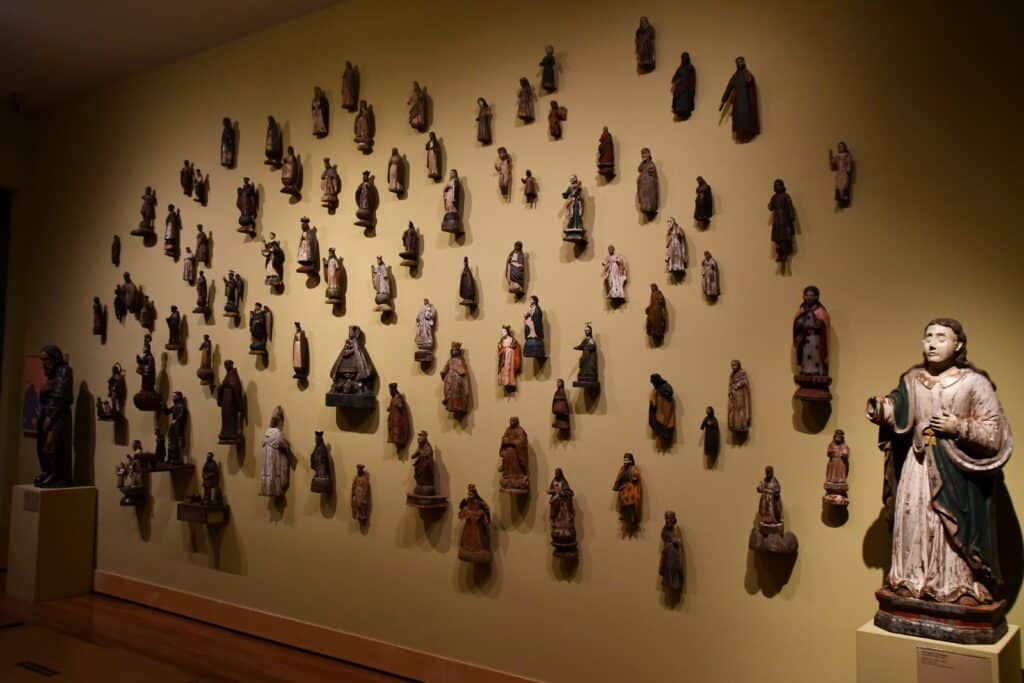
Exhibit at the Honolulu Museum of Art in Hawaii, (Shutterstock)
Art Education and Community Engagement
The Honolulu Museum of Art is more than just a place to admire beautiful works — it’s a hub for education and community engagement. The museum is dedicated to fostering a love for art and culture through a variety of interactive and hands-on programs designed for visitors of all ages.
Accredited by the American Alliance of Museums, HoMA’s art education programs are a mark of excellence. These include guided tours, workshops, classes, and children’s activities, all aimed at making art accessible and engaging. The museum’s staff collaborates closely with local schools and organizations to tailor programs to meet the diverse needs of the community.
But the museum’s commitment doesn’t stop there. HoMA actively reaches out to underserved communities, including schools and non-profit organizations, ensuring that everyone has the opportunity to experience the transformative power of art. Supported by grants from the National Endowment for the Arts and the Hawaii State Foundation on Culture and the Arts, these programs are a testament to the museum’s dedication to cultural enrichment.
Through partnerships with local arts organizations, participation in cultural festivals, and involvement in local events, the Honolulu Museum of Art provides a platform for artists and communities to share their stories and perspectives. It’s all part of the museum’s mission to promote cultural understanding and appreciation, making it a cornerstone of the Honolulu community.
Grab a Bite at HoMA Café + Pop by the Gift Shop
Tucked into one of the garden courtyards, the HoMA Café is one of the best-kept secrets in Honolulu for lunch or coffee. The setting is breezy and quiet, with shaded tables and views of lush greenery.
The menu changes seasonally and features locally sourced ingredients. Think ahi poke bowls, taro hummus plates, and fresh island greens. Don’t skip the lilikoi iced tea or their signature matcha latte.
The museum’s gift shop offers a diverse range of items such as art pieces, books, and unique souvenirs, making it a popular stop for visitors.
Pro tip: You don’t need to pay admission to dine at the café, so if you’re just in the area at lunchtime, it’s worth stopping by.
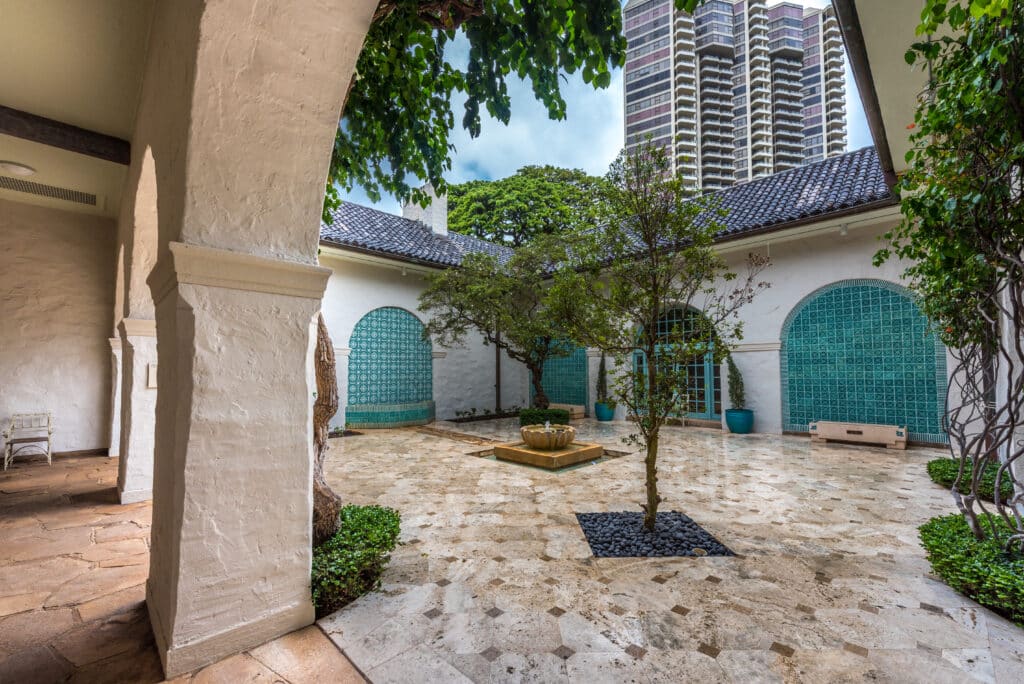
The Mediterranean Courtyard at the Honolulu Museum of Art (Shutterstock)
Events, Workshops, and Family Days
HoMA isn’t just for quiet museum strolls — it comes alive with events all year long. The Honolulu Museum of Art School offers a variety of classes and workshops, providing art education to thousands of participants every year.
- Family Sunday: Held once a month, this event includes keiki-friendly activities, art-making, and performances. It’s perfect for parents looking for a cultural yet fun outing.
- Film at HoMA: The Doris Duke Theatre shows indie films, documentaries, and international cinema. Check out the schedule here.
- Art Classes and Workshops: From ceramics to painting to digital design, there’s something for all ages and skill levels. You can browse the current offerings on their classes and workshops page.
- School Programs: The museum offers guided tours for school groups with hands-on experiences and children’s activities.
- Exhibit Openings and Evening Events: These special nights often include live music, food, and the chance to mingle with artists.
“I went for Family Sunday and ended up signing my daughter up for art camp. She’s already asking when we can go back.” — @honolulumama
Getting There and Parking
The museum is centrally located at 900 South Beretania Street in Honolulu. If you’re staying in Waikīkī, it’s an easy 10-15 minute drive. Parking is available in the HoMA lot across the street at $12 for the first three hours, and $6 per hour afterward. There’s also metered street parking nearby, but it fills up fast on weekends. For those using public transit, TheBus has several stops nearby, including on routes 1, 2, and 6. Check the route map for details.
Visiting the Honolulu Museum of Art
Here’s how to make the most of your visit:
- Arrive early to enjoy the least crowded time.
- Buy tickets online ahead of time to skip the line.
- Plan for lunch at the café — tables go fast around noon.
- Check for rotating exhibits before you go; there’s always something new to explore.
- Family Sunday is perfect for kids, but other days are calmer for solo travelers and couples.
- Bring a light sweater — some galleries are air-conditioned and chilly.
- Use the free app or ask for a gallery guide at the entrance for self-guided tour maps.
As a guest said on Twitter, “I was only going to pop in for an hour. Stayed for four. It’s like wandering through an art lover’s dream garden.” — @pacificvibesonly
Nearby Attractions to Round Out Your Day
If you’re already downtown, you might want to make a full day of it. Consider adding a visit to:
- The historic ʻIolani Palace is just five minutes away (plan your visit).
- The Kakaʻako mural walk for vibrant street art and coffee shops.
- A stroll through Chinatown for snacks and boutiques.
- A visit to Shangri La, a renowned museum dedicated to Islamic arts and culture, with guided tours organized by the Honolulu Museum of Art.
Why HoMA Should Be on Your Oʻahu Bucket List
Whether you’re an art lover, a history buff, or just someone looking for a peaceful escape, the Honolulu Museum of Art delivers. It’s an unexpected oasis in the heart of the city.
Beautiful gardens, world-class art, and a connection to Hawaiʻi’s past and present can all be found here. The museum houses innovative exhibitions that contribute to its role as a cornerstone of the Honolulu community.
As @artandaloha puts it, “This is the place I go when I need to refill my creative cup. It’s more than a museum. It’s a vibe.”
